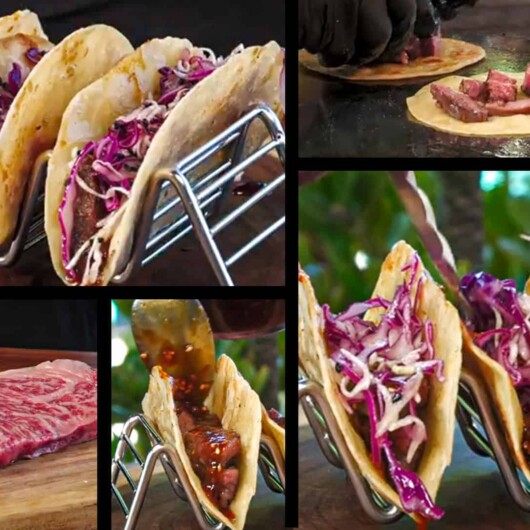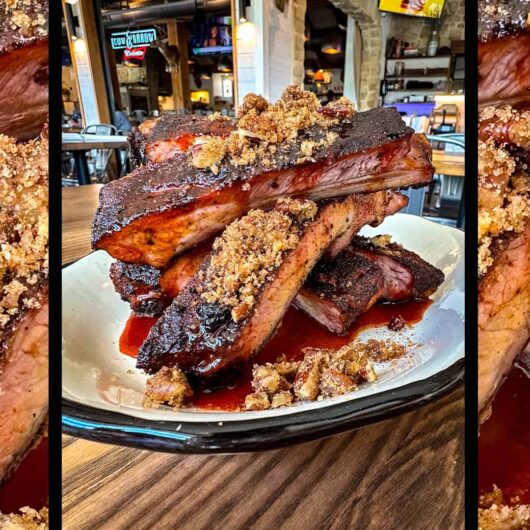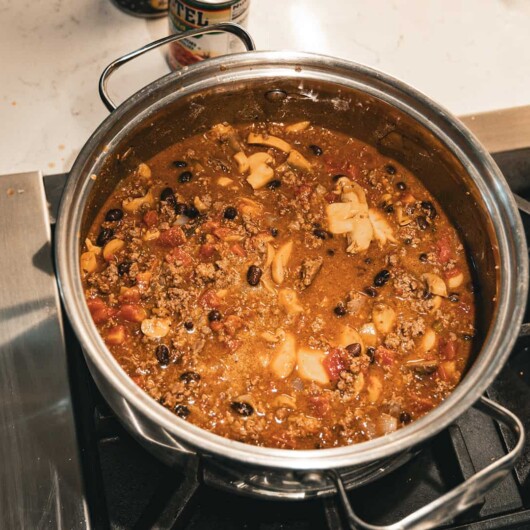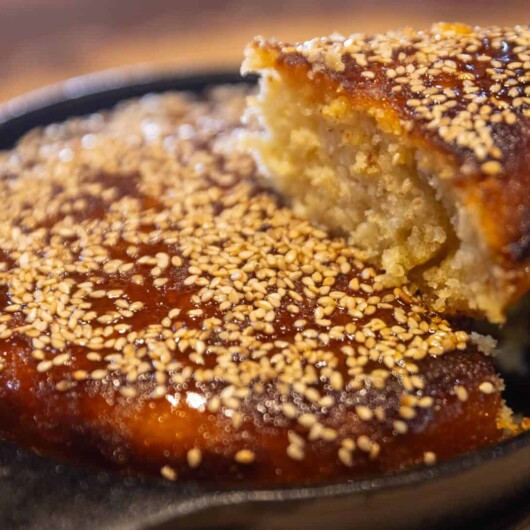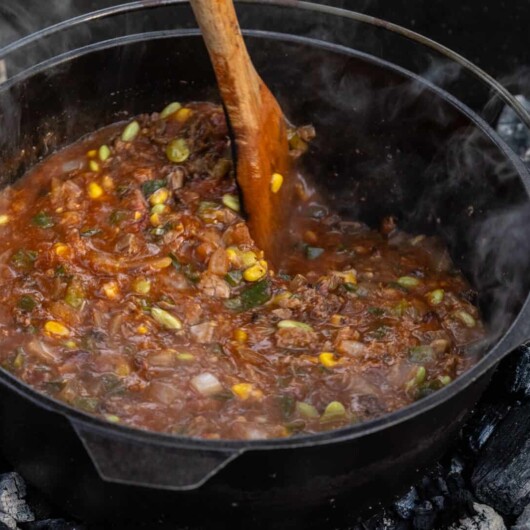There are very few meals that complement every season of the backyard life quite like a taco. They’re versatile, easy to make, and just taste downright great, no matter the event. So, join in as Ballistic BBQ’s Greg Mrvich throws down on the griddle and ups the ante on a humble recipe with his delicious Wagyu street tacos.
Asian-inspired Barbeque Sauce
To kick off this cook, Mrvich concocts his personal yankiniku spinoff—a savory Japanese barbeque dipping sauce. And the ingredients are simple—it’s a quick blend of soy sauce, mirin (a type of Japanese rice wine), grapefruit juice, and grated garlic and ginger. To get a really fine grate on both, Greg recommends using a microplane, which is finer-bladed than your traditional box grater.
Next, he adds in some white sugar and gochujang—a moderately spicy and earthy Korean fermented chili pepper paste which elevates any meal. Then, he tosses in sesame oil, whisks the ingredients together, and places the sauce over heat for about two to three minutes. (Or, just enough time to infuse the ginger root and garlic.) Finally, he whisks in toasted white sesame seeds and sets the sauce aside to cool, allowing all the flavors to really blend.
Asian-Inspired Dressing and Slaw
While the barbeque sauce is cooling, Greg gets to work on creating the Asian dressing and slaw to top off his Wagyu street tacos. The slaw is a simple combination of olive oil, soy sauce, rice vinegar, mirin, sesame oil, sugar, and toasted black sesame seeds, which add the perfect contract to the white sesame seeds in the sauce.
After whisking the dressing together, Greg combines finely-shredded purple cabbage and very finely-shredded white cabbage in a bowl, drizzles on the dressing, and gives it a shake until fully combined. The idea behind this combo is to enhance the flavors of the taco, all while letting the Wagyu shine. He says this mixture adds the perfect crispy, acidic taste that both complements and cuts right through the richness of the Wagyu, thanks to the vinegar.
Grilling Up the Wagyu
Now’s the time to start on this meal’s namesake—the Wagyu! For this cook, he’s using a 15-ounce New York strip, A5 Wagyu beef straight from Japan. While there might be a million-and-one Wagyu steak cook videos out there, the fact he’s making A5 tacos make this cook one-in-a-million.
Greg sprinkles on a little kosher salt and throws the meat straight on the griddle, set to medium-high heat. Since the steak is pretty thin (just about a half inch), he’s grilling it for about two minutes per side until medium-rare.
After the meat’s been grilled, he gets to work on the tortillas! Normally, for street tacos, he’d opt for corn tortillas, be he really wants to let the Wagyu shine. So, he ‘s using small, street taco-sized flour tortillas. He just drops some of the reserve Wagyu fat on the griddle, throws the tortillas on, and flips them until they have a nice toast on both sides.
Serving the Wagyu Street Tacos
After the cook’s all wrapped up, now comes the fun part: plating (and then eating, of course). First things first, he throws some chopped-up Wagyu beef on the tortillas and drizzles on the homemade sauce. He then layers on some slaw and sprinkles on more black sesame seeds for a finishing touch.
That’s it! While this certainly isn’t your standard street taco, the inclusion of Wagyu make it worthy of even the highest-end chophouse menu. Mrvich calls it a “novelty” recipe, but one that pays respect to the meat and is bound to impress any guests you might have over, regardless of the occasion.

